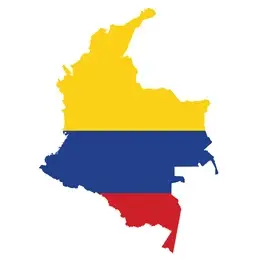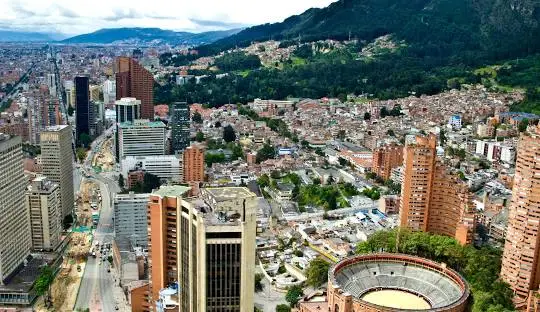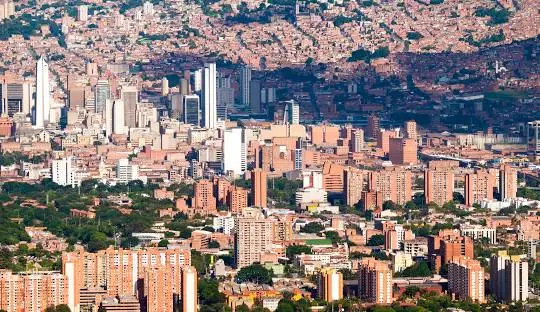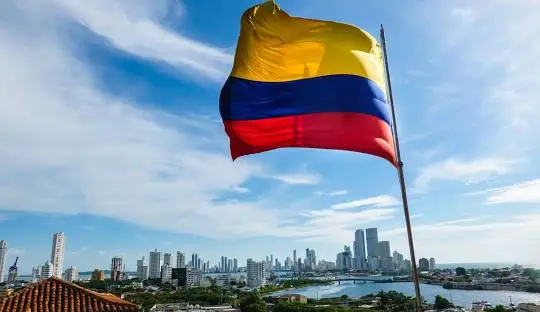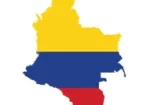Study MBBS in Colombia
COLOMBIA COUNTRY PROFORMA
About Colombia
Because of its location in the northwest of the continent, where South America meets Central and North America, Colombia known as the “gateway to South America”. It is the second-largest Spanish-speaking nation in the world and the fifth largest nation in Latin America.
Extremes abound in Colombia. The Andes’ majestic, snow-capped mountains and towering volcanoes cut through its center. The north and west lined with tropical beaches. Additionally, there are large grasslands in the east known as Los Llanos and deserts in the north.
Nearly the whole southern region of Colombia is made up of the Amazon Basin, which is covered in dense forests. The Chocó, a warm, humid, jungle-filled region in northwest Colombia, stretches across the Panamanian border.
People in Colombia are as different as the country’s scenery. Three ethnic groups comprise the majority of the population: European settlers, Africans brought to Colombia as slaves, and Indians. The food, music, dance, and artwork of the nation are all distinctive and varied due to this rich cultural blend.
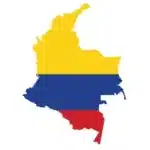
WDOMS List of MBBS College in Colombia
- Corporación Universitaria Empresarial Alexander von Humboldt – Armenia
- Corporación Universitaria Rafael Núñez Facultad de Ciencias de la Salud – Cartagena
- Corporación Universitaria Remington Facultad de Ciencias de la Salud – Medellin
- Fundación Universitaria de Ciencias de la Salud (FUCS) Facultad de Medicina – Bogotá
- Fundación Universitaria Juan N. Corpas – Bogotá
- Fundación Universitaria Navarra (UniNavarra) Facultad de Ciencias de la Salud – Neiva
- Fundación Universitaria San Martín Facultad de Medicina Bogotá – Bogotá
- Fundación Universitaria San Martín Facultad de Medicina Cali – Cali
- Fundación Universitaria San Martín Facultad de Medicina Pasto – Pasto
- Fundación Universitaria San Martín Facultad de Medicina Puerto Colombia – Puerto Colombia
- Fundación Universitaria San Martín Facultad de Medicina Sabaneta – Sabaneta
- Fundación Universitaria Sanitas Facultad de Medicina – Bogotá
- Institución Universitaria Visión de las Américas – Pereira
- Pontificia Universidad Javeriana Bogotá Facultad de Medicina – Bogotá
- Pontificia Universidad Javeriana Cali Facultad de Ciencias de la Salud – Cali
- Unidad Central del Valle del Cauca Facultad Ciencias de la Salud – Tuluá
- Universidad Antonio Nariño Facultad de Medicina – Bogotá
- Universidad Autónoma de Bucaramanga Facultad de Medicina – Bucaramanga
- Universidad CES Escuela de Medicina – Medellin
- Universidad Cooperativa de Colombia Escuela de Medicina, Medellin – Medellin
- Universidad Cooperativa de Colombia Facultad de Ciencias de la Salud, Santa Marta – Santa Marta
- Universidad Cooperativa de Colombia Facultad de Medicina, Pasto – Pasto
- Universidad Cooperativa de Colombia Facultad de Medicina, Villavicencio – Villavicencio
- Universidad de Antioquia Facultad de Medicina – Medellin
- Universidad de Boyacá Facultad de Ciencias de la Salud – Tunja
- Universidad de Caldas Facultad de Ciencias para la Salud – Manizales
- Universidad de Cartagena Facultad de Medicina – Cartagena
- Universidad de Ciencias Aplicadas y Ambientales Facultad de Ciencias Médicas – Bogotá
- Universidad de la Sabana Facultad de Medicina – Chia
- Universidad de Los Andes Facultad de Medicina (Colombia) – Bogotá
- Universidad de Manizales Campo de Ciencias de la Salud – Manizales
- Universidad de Nariño Facultad de Ciencias de la Salud – Pasto
- Universidad de Pamplona Facultad de Salud – Pamplona
- Universidad de Santander (UDES) Facultad de Ciencias de la Salud – Bucaramanga
- Universidad de Sucre Facultad de Ciencias de la Salud – Sincelejo
- Universidad del Cauca Facultad de Ciencias de la Salud – Popayan
- Universidad del Magdalena Facultad de Ciencias de la Salud – Santa Marta
- Universidad del Norte Programa de Medicina – Barranquilla
- Universidad del Quindío Facultad de Ciencias de la Salud – Armenia
- Universidad del Rosario Escuela de Medicina y Ciencias de la Salud – Bogotá
- Universidad del Sinú Elias Bechara Zainúm Escuela de Medicina Cartagena – Cartagena
- Universidad del Sinú Facultad de Ciencias de la Salud Montería – Monteria
- Universidad del Tolima Facultad de Ciencias de la Salud – Ibague
- Universidad del Valle Escuela de Medicina, Cali – Cali
- Universidad El Bosque, Escuela Medicina Colombiana – Bogotá
- Universidad ICESI Facultad de Ciencias de la Salud – Cali
- Universidad Industrial de Santander Escuela de Medicina – Bucaramanga
- Universidad Libre de Cali Facultad de Ciencias de la Salud – Cali
- Universidad Libre de Colombia Facultad de Ciencias de la Salud – Barranquilla
- Universidad Metropolitana Programa de Medicina – Barranquilla
- Universidad Militar Nueva Granada Facultad de Medicina – Bogotá
- Universidad Nacional de Colombia Facultad de Medicina – Bogotá
- Universidad Pedagógica y Tecnológica de Colombia Facultad de Ciencias de la Salud – Tunja
- Universidad Pontificia Bolivariana Facultad de Medicina – Medellin
- Universidad Santiago de Cali Facultad de Salud, Campus Palmira – Palmira
- Universidad Santiago de Cali Facultad de Salud, Campus Pampalinda – Cali
- Universidad Simón Bolívar Facultad de Ciencias de la Salud – Barranquilla
- Universidad Surcolombiana Facultad de la Salud – Neiva
- Universidad Tecnológica de Pereira Facultad de Ciencias de la Salud – Pereira
Climate at Colombia
Colombia has a diverse climate that influenced by its equatorial location and varied topography. The nation has a tropical climate that divided into different zones according to altitude. The coastal regions of the lowland Tierra Caliente experience warm temperatures, with high humidity and a temperature range of 24°C to 38°C. As one moves into the middle-altitude zones, or Tierra Templada, major cities like Bogotá covered by generally mild temperatures ranging from 14°C to 24°C. The climate changes to Tierra Fria and Tierra Helada as one ascends higher elevations; here, temperatures drop and snowfall becomes frequent on the highest peaks.
Furthermore, the highest mountainous regions of Páramo have an alpine tundra climate, which characterized by chilly temperatures and distinctive alpine flora. The Amazon rainforest climate, which is typified by high temperatures, humidity, and regular rainfall, predominates in the southern portion of the nation. Colombia’s diverse climate, which ranges from tropical lowlands to chilly mountain peaks, is a reflection of the country’s rich geographical diversity.
Study MBBS in Colombia
Study MBBS in Colombia. MBBS programme is quickly gaining popularity among students seeking an international medical degree. The curriculum updated as needed and time permits in Colombian medical universities, where the quality of instruction is on par with that of international education systems. Studying there made more appealing by the Colombian way of life and the excellent condition of the housing and other amenities on and around the university campus.
When comparing Colombia’s medical universities’ tuition costs to those of other nations, the cost is slightly lower while the specializations and level of instruction are nearly identical. Colombia is a popular choice among medical enthusiasts for their academic destination because of this.Colombia’s medical college outfitted with cutting-edge technology and top-notch systems to give students an exceptional educational experience.
MBBS for Indian Students in Colombia
Since the NMC and the Indian Ministry of Health Department recognise MBBS in Colombia, studying MBBS there is completely safe for any Indian student. To become a doctor, students only need to pass the exam. The application process for MBBS admission in Colombia is simple and straightforward; students can apply directly and without difficulty to the top medical colleges or universities of their choice.
- Colombia is one of the world’s most developed nations. Colombia is among the best nations in the world for world-class education.
- When comparing Colombia to the USA and other elite nations, medical education there is more reasonably priced.
- Studying in Colombia will give you the opportunity to immerse yourself in a completely new culture that unmatched by anything else in the globe.
Advantages of studying medicine in Colombia for Indian Students
Universities’ High Academic Standards
The British organization Quacquarelli Symonds published a ranking of the top 300 universities in Latin America in December 2016, and 41 Colombian universities included because of their high standards, excellent educational programmes, and ability to provide a learning environment that fosters students’ development both inside and outside of the classroom.
Universities like Pontificia Universidad Javeriana, Universidad de Antioquia, Universidad de Los Andes, Universidad Nacional, and Universidad de La Sabana are among those on the list.
Access to Education Is Easy
The ease with which foreign students can complete immigration procedures and obtain a visa to study in Colombia is another factor that attracts them to the nation.
Actually, the vast majority of Colombian universities that have granted Ministry of Education accreditation seek to collaborate with other universities in order to facilitate student exchanges and other processes like acquiring temporary visas, which enable students from all over the world to enroll in academic programmes in Colombia with or without financial assistance. Furthermore, you won’t require a visa to study in Colombia if you are a citizen of one of the Pacific Alliance nations.
Minimal Living Expense
Foreign students also benefit from Colombian universities in terms of the quality of life outside of the classroom, as the cost of living there is significantly lower than in most American and European cities, making it an affordable option for students from Latin America.
Additionally, the educational programme can enhanced with visits to any of the hundreds of paradisiacal locations across the nation, which will surely improve the experience of studying in Colombia for any foreign student without breaking the bank.
Disadvantages of studying medicine in Colombia for Indian Students
Education’s quality:
There are significant differences in the quality of education between Colombian universities. It’s possible that certain universities lack the staff, resources, and facilities needed to offer high-quality instruction. Furthermore, the curriculum might not be up to date with the most recent developments in medicine and might not adhere to the Indian Medical Association’s standards.
Acknowledgment of the Degree:
A list of accredited medical schools for MBBS Colombia is available from the Medical Council of India (MCI). If you attend a university that is not accredited by MCI, it may affect your ability to obtain an Indian medical license. It’s critical to investigate and choose a university with MCI accreditation in order to prevent such issues.
Various healthcare frameworks:
The healthcare systems in different nations can differ significantly. Students might struggle to practice medicine in India and might not gain the necessary understanding of the Colombian healthcare system. Furthermore, there may be differences between Colombian medical practises and procedures, which could cause misunderstandings and confusion.
Absence of a support structure
For students, studying in Colombia can be challenging. In India, they might not have access to the support networks they are used to. It’s possible that they lack access to Indian food, cultural events, and other things that help them feel comfortable. This may have an impact on a student’s motivation, emotional well-being, and academic achievement.
MBBS eligibility
- The candidate needs to have earned a minimum of 50% overall in PCB courses.
- Candidates must have completed PCB Physics, Chemistry, Biology, and English in their 10+2 or equivalent coursework.
- As of December 31, candidates had to have completed 17 years.
- For admission to the BDS or MBBS programmes in Colombia, Indian students must have passed the NEET Exam (if they want to be eligible to practise back in India).
- proficiency in the Spanish language
Student life in Colombia (for eg. Cost of Living, Educational System, Accommodation, Language, Cultural Experience)
Cost of Living
The price of living and studying in Colombia
You should budget about $630/€550 per semester if you decide to attend a public university. A private university will cost you roughly $630/€550 to $3,450/€3,100 per semester, if you decide to enroll.
Educational System
English, French, Spanish, Portuguese, and Chinese are the five common international languages used in higher medical education in Colombia. Language barriers among other international students in these higher education institutions have resolved as a result. Almost six years of work needed to earn the highly advanced degree of doctor of medicine. To certify students as medical doctors, many M.D. programmes require a mix of coursework, research papers, and practical clinical experience.
Accommodation
The following choices for student housing exist in Colombia:
University residences: Colombian university residences offer all the amenities one could possibly need, including food, television, laundry, internet, and so forth.
Apartments: This type of housing is appropriate for students who want greater independence. In Colombia, apartments are typically furnished. There are bedrooms that can accommodate one or two people, along with all the amenities that required.
Homestays: This is the greatest type of lodging if you want to become fluent in the local tongue while also learning about Colombian culture and customs. You will acquire the language, comprehend the local way of life, pick up idioms and slang with ease, and your accent will sound more authentic while studying with the host family.
Teacher Home: In Colombia, students can choose to live with their language instructor. One of the best and fastest ways to pick up the language is to study it in the teacher’s home. You can fully immerse yourself in the language and culture of the nation by choosing this lodging option.
The location and amenities of an accommodation affect its price.
Language
Doctors, nurses, dentists, medical students, and other medical professionals who wish to learn Spanish in order to work in Spanish-speaking hospitals can enrol in medical Spanish courses in Colombia.
Cultural Experience
Because Colombia’s population is diverse in terms of customs, lifestyles, social classes, and ethnicities, there is a blending of cultures that students learn about. On the other hand, some forms of entertainment, cuisine, and art recognised as national customs. Some sources of pride specific to the region, like Colombia’s diverse speech patterns, cuisines, and clothes styles—although the majority of students dress in Colombian fashions that are widely seen in North America and Europe.
Links
https://kids.nationalgeographic.com/geography/countries/article/colombia
